Queensland Recruiting Committee Records Digitised @ SLQ
By JOL Admin | 23 February 2016
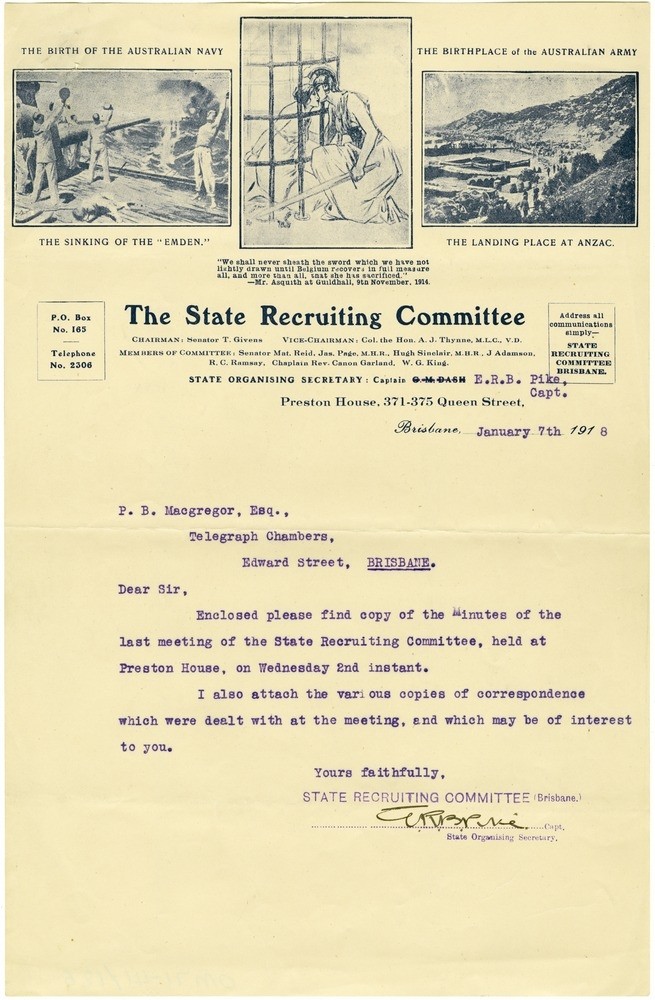
Queensland Recruiting Committee Records, OM71-41, item 186
A significant World War I collection held in the John Oxley Library is that of the Queensland Recruiting Committee. The collection was donated to the library some time before 1949, although the source and exact date of the acquisition is unknown. The records include almost 200 letters to and from the committee, newspaper clippings, pamphlets relating to the war, minutes, financial statements and ephemera. A selection of the most significant items in the collection has recently been digitised and may be viewed in our catalogue.
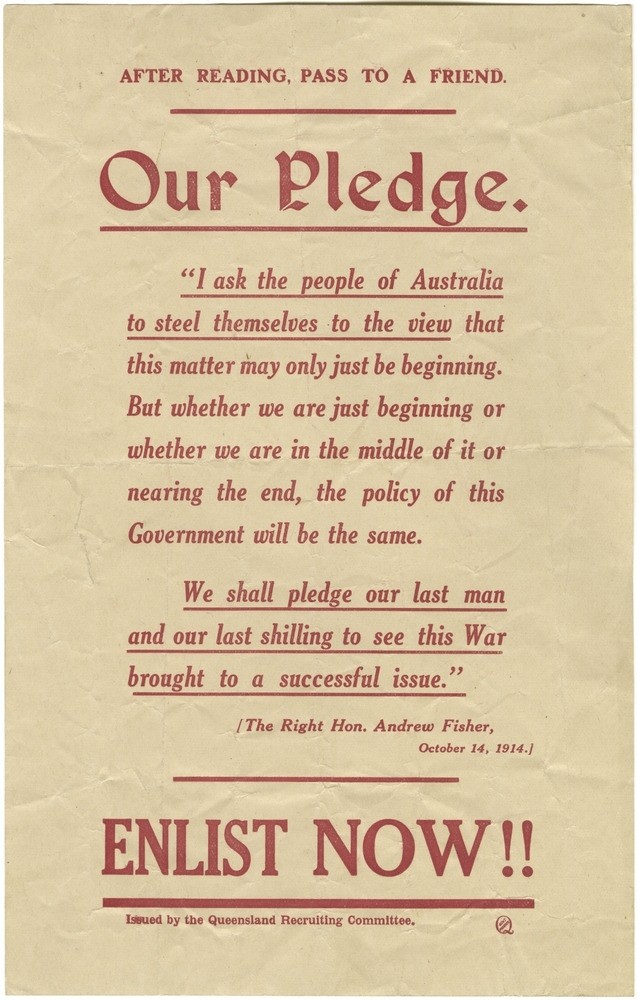
Queensland Recruiting Committee flyer, OM71-41, item 256.
The Queensland Recruiting Committee was formed at a meeting held in the Brisbane Town Hall on the 28th May 1915 to discuss ways to encourage recruitment in the state. The chair of the meeting was the Brisbane Lord Mayor, Alderman G. Down, with other notaries present including Archbishops Donaldson and Duhig, Major H.W. Pendlebury, Colonel A.J. Thynne, and Lieutenant-Colonel Canon Garland. The meeting led to the formation of the Queensland Recruiting Committee with the main objective being "to encourage recruiting and obtain recruits in Queensland for active service with the Australian Imperial Forces". (Brisbane Courier, 29 May 1915)
The agenda papers for this formative meeting are held in the collection.
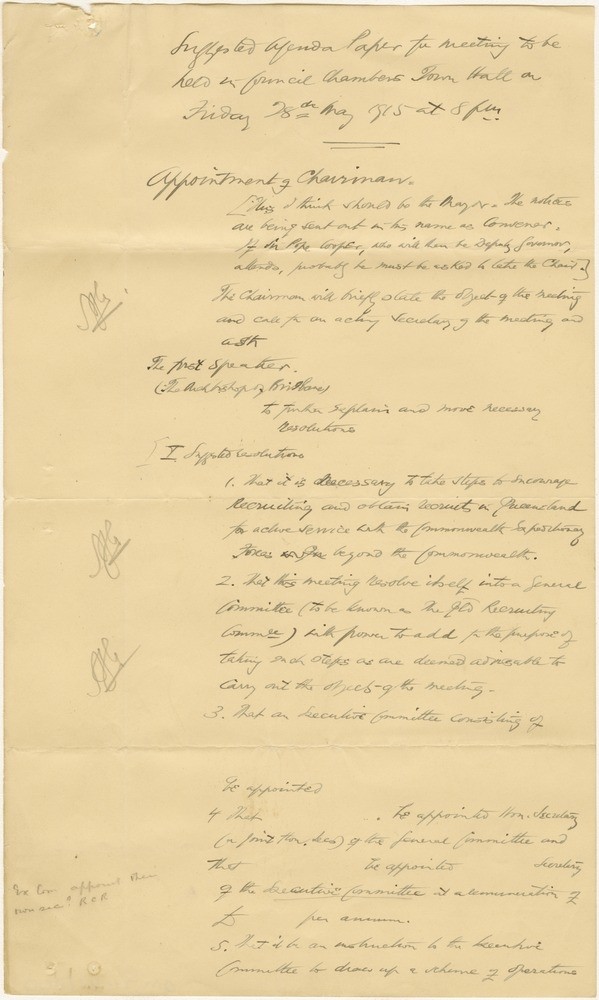
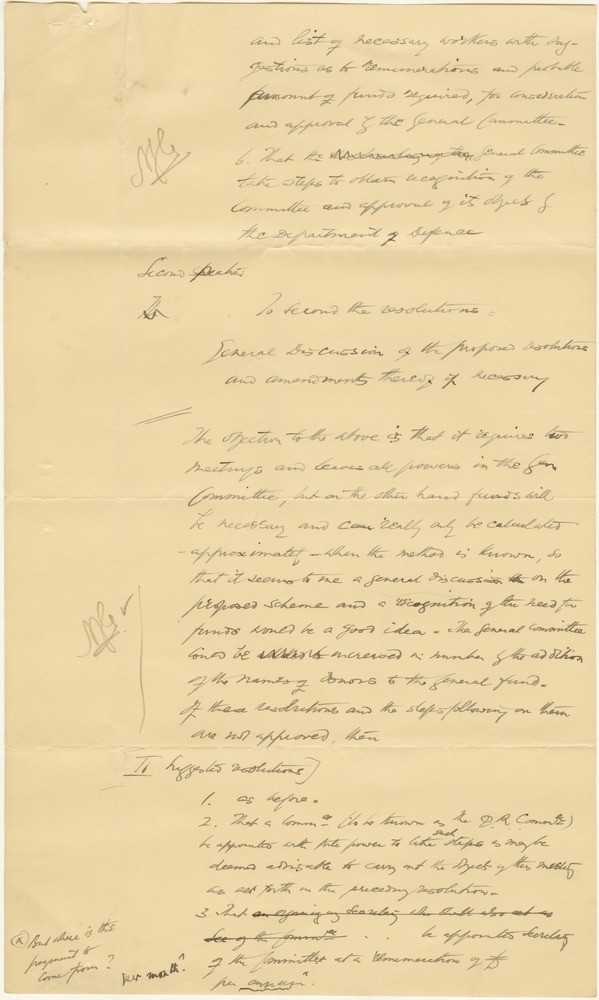
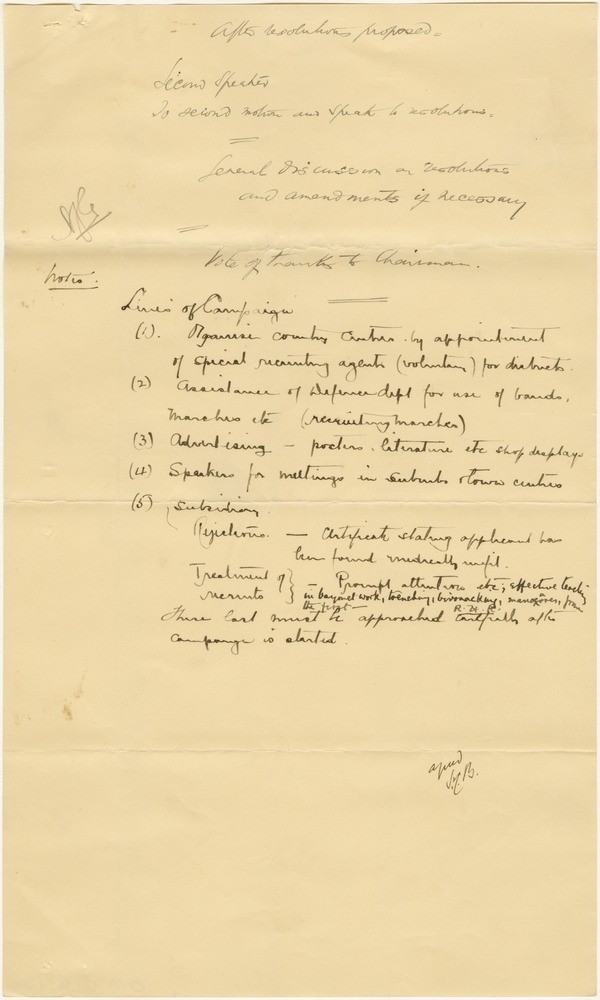
The committee included members of parliament, clergymen and local government officials and initially was an independent and privately funded group of volunteers. In October 1915 it came under the guidance of the recently appointed Queensland War Council which was formed by the government to assist returned soldiers and the dependents of those killed.
The need for such a committee became obvious as the war progressed and the initial enthusiasm waned. At the outbreak of war the number of volunteers, caught up in a wave of patriotic fervour, was so high that recruitment officers were forced to turn men away. By the end of 1914, 52,000 Australians had enlisted. Enthusiasm was spurred on in 1915 with the excitement of the Gallipoli landings and the sinking of the passenger ship, the Lusitania, in the North Atlantic by a German submarine. However by the latter half of 1915 enthusiasm was waning. The wounded and maimed men had returned from Gallipoli, and as the casualty rates increased the number of volunteers declined for this far-away war in a distant land.
Recruitment committees throughout the country employed a number of methods to increase the numbers, including press advertisements, posters, recruitment meetings and marches such as that of the Dungarees; volunteers who marched from Warwick on the Darling Downs to Brisbane, picking up more recruits along the way. The collection includes information and an itinerary for the Dungarees March, held in November 1915.
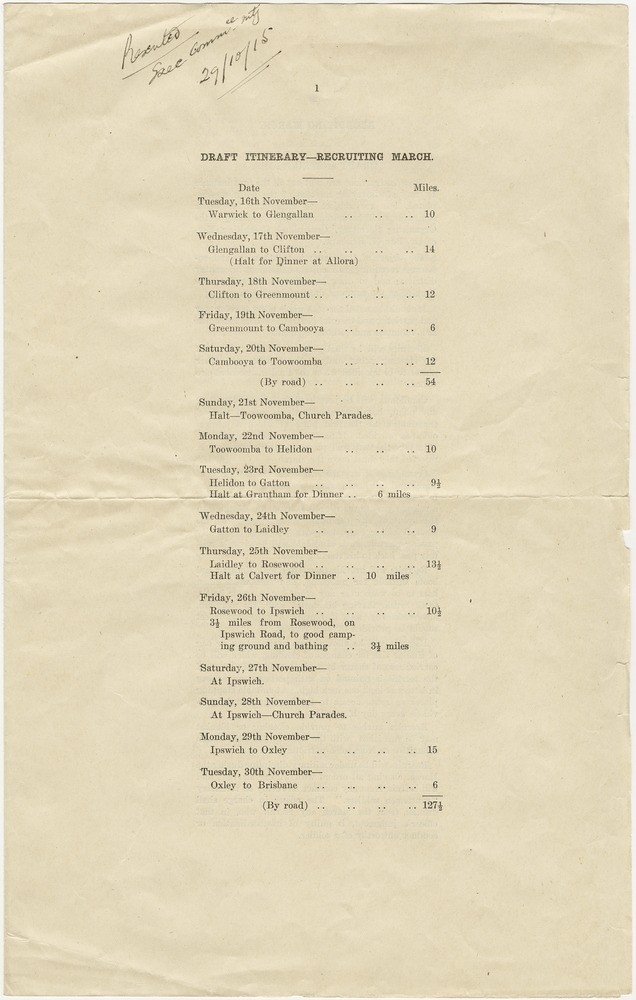
Itinerary for the Dungarees March. OM71-41, item 222.
The letter below was directed at businesses and employers encouraging them to give preference to returned soldiers for job vacancies and to keep jobs open for any employees who enlisted. it is also interesting as it is written on official letterhead of the Queensland Recruiting Committee and includes a list of the office bearers.
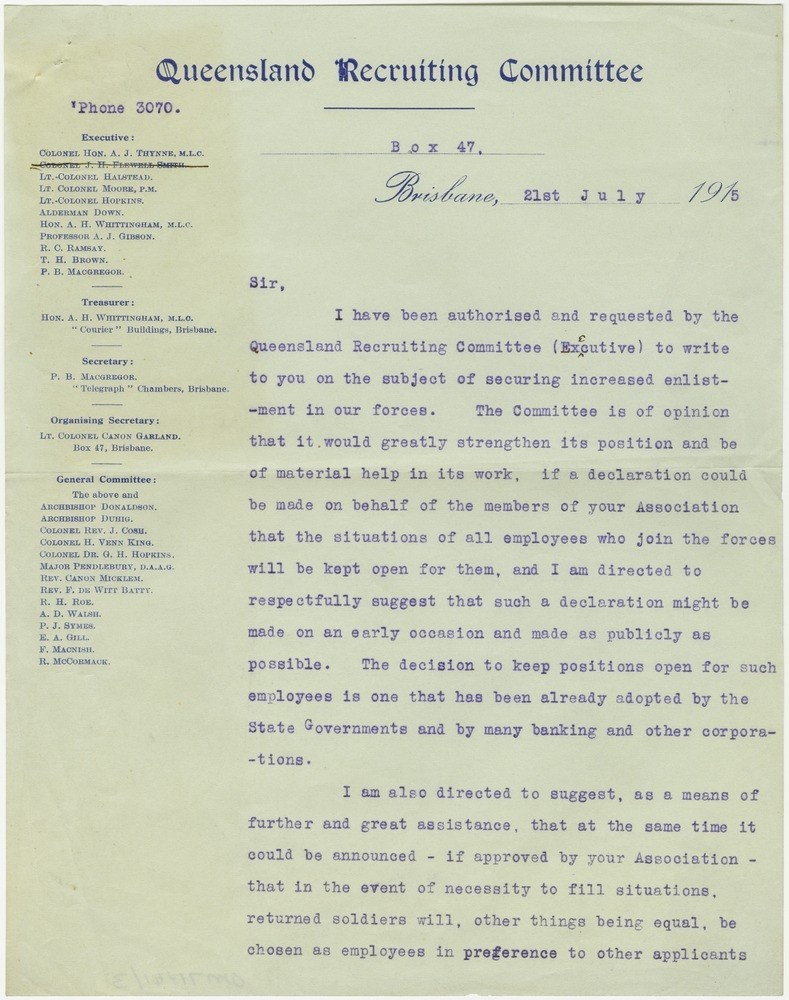
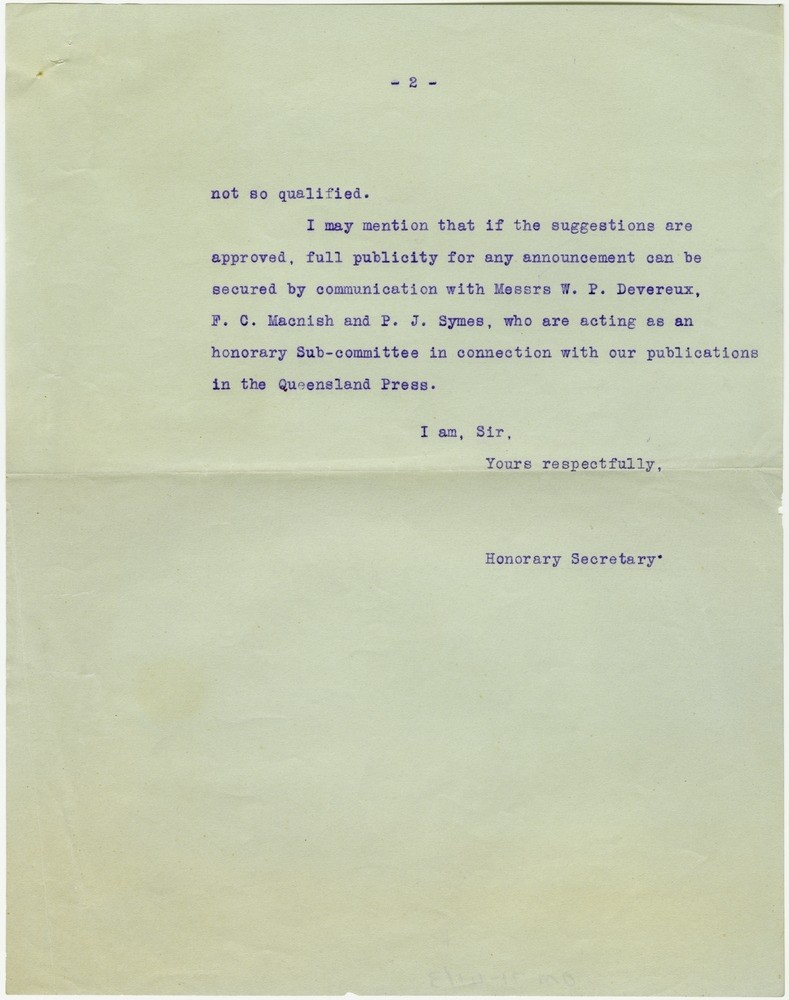
As time went by many recruiters, and the federal government, believed that voluntary enlistment had reached its limit and that conscription was the only way to obtain additional troops. Two conscription referenda were held in Australia during October 1916 and December 1917. Both were defeated and caused bitter and vitriolic divisions throughout the country as the pro and anti conscription forces clashed. Queensland Labor politician, T.J. Ryan, was the only premier in Australia to oppose conscription which led to a serious breach with Prime Minister, Billy Hughes.

As the push for conscription was defeated pressure mounted to boost the number of volunteers. In 1917 the Queensland Recruiting Committee reported that interviews had been conducted with every eligible man in the state who had not yet enlisted and whose contact details were known, and that the records of these interviews were on file. In some cases subsequent interviews were held. Local recruiting committees held weekly rallies and in Brisbane recruitment speeches were given twice daily outside the General Post Office. Advertisements appeared in the press and speeches were given at picture theatres and racecourses. However despite these efforts the recruitment quotas set by the government were never met.
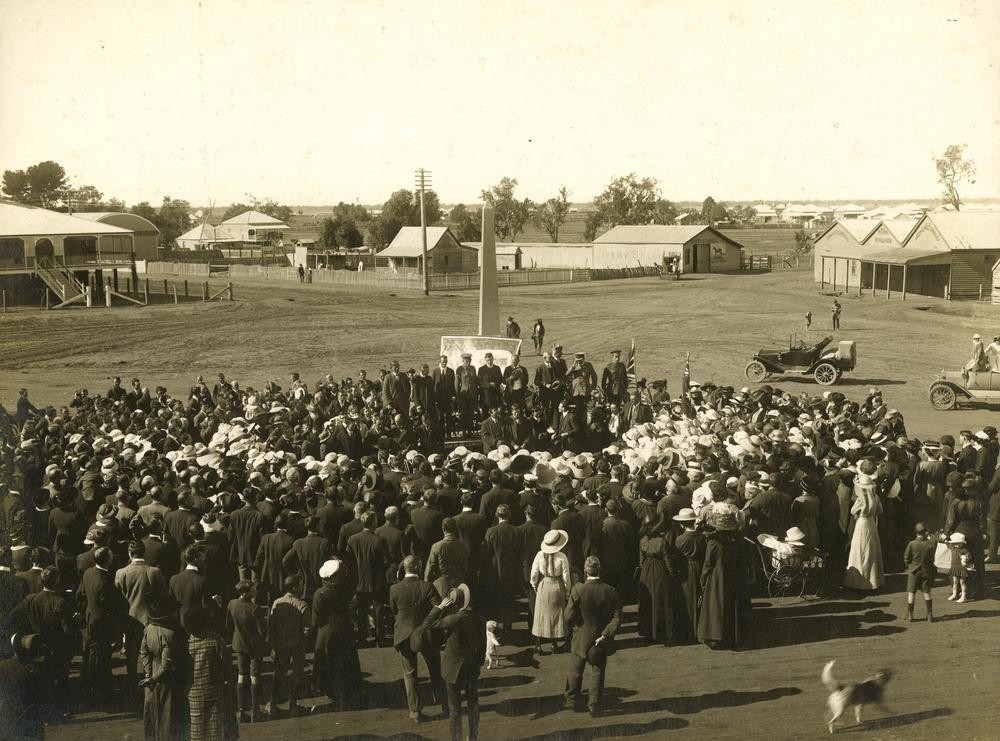
Crows attending a recruitment rally in Dalby, Queensland, during World War I, ca. 1915. John Oxley Library, APE-20 Album of photographs of recruitment rallies in country towns of south-west Queensland, http://hdl.handle.net/10462/deriv/123227
At the time of the armistice in November 1918 the scenes of celebration and victory masked deep and bitter divisions in Australian society which had been exposed by the experience of war and which would be difficult to heal.
The records of the Queensland Recruiting Committee are held in the John Oxley Library, Accession OM71-41. The finding aid and selected digitised items are available through the catalogue at: http://hdl.handle.net/10462/eadarc/3010
In addition Queensland State Archives hold records for the Queensland War Council, including minute books, financial records, and correspondence. The State Archives have also published a paper regarding recruitment and enlistment 'We must keep the fires of enthusiasm burning throughout the State': Recruitment and enlistment in Queensland during the First World War.
Lynn Meyers, QAnzac 100 Content Curator
Comments
Your email address will not be published.
We welcome relevant, respectful comments.